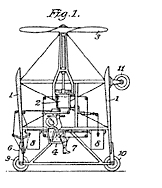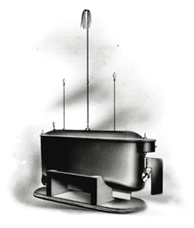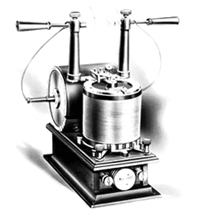-
Professor Bret Heinrich
Department of Physics, SFU
Home Page
-
Spintronics-new way of electronics
View video of the presentation here: https://vimeo.com/119793897
In the early eighties a small group of physicists in North America
and Europe embarked on idea of creating new metallic magnetic materials
using atomic engineering. Molecular Beam Epitaxy (MBE) was at that time
already very successful in the gigahertz electronics using III/V
compound semiconductors. The application of this technique to metals was
viewed by the semiconductor community at that time with great
skepticism. Physicists working in the early stages of magnetic nano
structures were not distracted by these sceptics. Without having any
clearly defined goals and landmarks they enthusiastically pressed ahead
with their ideas. Slightly more than a decade later, the materials
science based on ultrathin magnetic nanostructures has become one of the
dominant themes of condensed matter physics and materials science
involving thousands of scientists, worldwide. This is driven both by the
fact that the subject of spin polarized transport is an challenging
field of study, and also by technological opportunities which lie in
electronic devices, which have a new degree of functionality based upon
the spin of electrons. It led to the development of a major new
direction in electronics-so called spintronics. Interlayer exchange
coupling, giant magnetoresistance, spin valves and spin tunneling are
now well developed concepts used even in daily press. We have now hard
drive disks with the memory densities of 100 Gigabits/inch2. Motorola,
Honeywell and IBM and European and Japanese counterparts are in the race
introducing commercially successful non-volatile random access memory
(MRAM), spin polarized light emitting diodes (SPLED), and spin
transistors. In this talk some of this progress, challenges and future
opportunities will be highlighted.
-
Biosketch
Bret Heinrich is a Professor of Physics and Director of the Surface
Science Laboratory at Simon Fraser University (SFU). He is also a member
of the Pacific Center for Advanced Materials and Microstructures. Dr.
Heinrich received his Ph.D. in Physics from the Czechoslovak Academy of
Sciences, Czechoslovakia, in 1967. After holding research positions in
the USSR Academy and the Czechoslovak Academy of Sciences, he moved to
British Columbia to become a Postdoctoral Fellow at Simon Fraser
University in 1969. He progressed through the ranks at SFU, becoming a
Full Professor in 1996. Dr. Heinrich was elected a Fellow of the
American Physical Society in 1995, and in 1998 he received the Humboldt
Research Award of the Humboldt Foundation in Germany. He was cited for
"outstanding research in the field of surface science."







